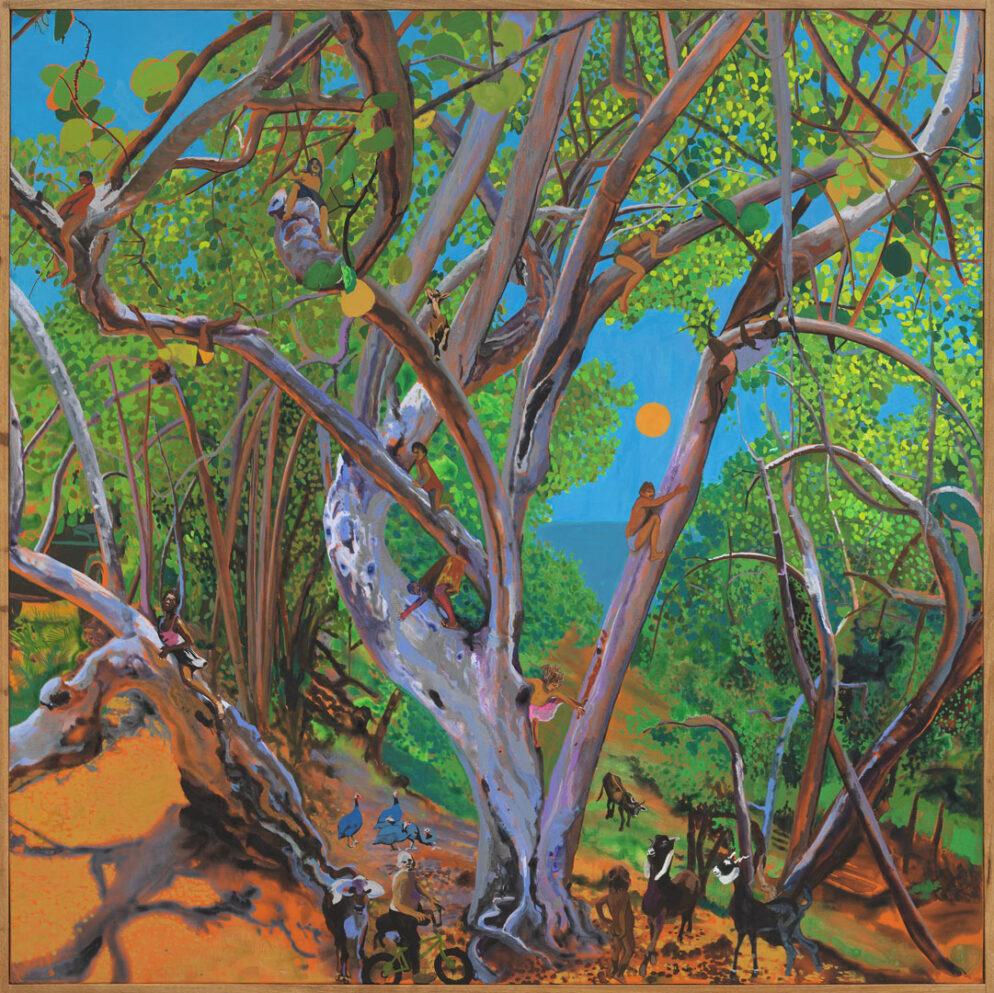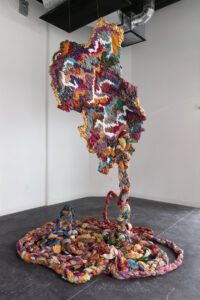Colorado is about as landlocked as you can get. However, you can still appreciate an ocean and its salty breezes — and much more — thanks to “Breathe into the Past: Crosscurrents in the Caribbean,” a new exhibit at the Colorado Springs Fine Arts Center at Colorado College that ran through Jan. 29, 2023.
It features the work of 12 contemporary artists who have a link to various places in the Caribbean, including the Dominican Republic, Jamaica, Cuba, Haiti, Puerto Rico, Guyana, Trinidad and Tobago, and coastal Colombia.
Naomi Wood, chair and associate professor of Spanish and Portuguese at CC, as well as the co-curator of the exhibition, says what stands out about the exhibit for her are the multiple types of media.
“We have saris made into a sculpture, sugar as part of painting, headphones with tracks from a new album, pottery, slideshow photos, flags, photography, a thorn-adorned coat, and multi-screen video installations,” Wood says. “We wanted to demonstrate the diversity in artistic expressive forms while also linking the artists through shared themes of coloniality, bodily memory, and links between past, present, and future.”
Katja Rivera, FAC’s curator of contemporary art, says planning for the exhibit began in 2021 when Wood brought together artists and a group of CC and University of Colorado Colorado Springs faculty whose research centers on the Caribbean. They brainstormed possibilities for connecting an exhibition with their scholarship.
Wood says Alexis Pauline Gumbs’ book, “Dub: Finding Ceremony,” helped inspire the exhibition (the exhibit’s title comes from a line in the book). Gumbs’ text is available for patrons to peruse while they are in the gallery, as is a reading list of critical texts for further study of antiracist Caribbean authors.
“The book channels ancestral knowledge toward understanding Caribbean histories and navigating Caribbean futures,” Rivera says. “We looked to artists who are exploring the histories, ecologies, and cultures of the Caribbean, broadly defined, to understand marginalized histories that have shaped the region and, more broadly, the Americas as we know them today.”
Rivera says she hopes visitors can connect with the exhibit in a variety of ways.
“Perhaps they might learn about a new artist, understand how the Caribbean is inextricably connected to other parts of the globe, consider contemporary political issues and islands’ relationship to one another. They might think how migration — both voluntary and forced — has shaped the region or think about how human and non-human life is intertwined.”

